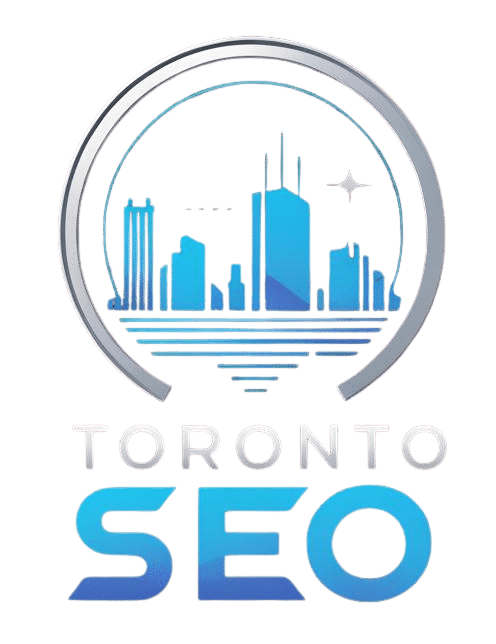In 2025, Toronto’s local search landscape is more competitive than ever. Businesses still talk about NAP consistency—Name, Address, Phone number—as if it is the single force that determines whether they rank in Google Maps. But the truth is far more nuanced. While NAP accuracy remains important, many long-held beliefs about citations and directory listings no longer reflect Google’s actual ranking systems in 2025—especially now that AI-powered local algorithms, entity signals, and behavioural metrics play a greater role in determining which Toronto businesses show up in the 3-Pack.
This guide breaks down the myths, exposes what truly affects rankings today, and shows how Toronto businesses can build a modern, ROI-driven local SEO strategy that actually moves the needle.
Table of Contents
Breaking Down the NAP Consistency Myth
How Google Actually Processes Local Business Data in 2025
Why Entity Strength Outweighs Citation Volume
NAP vs. Reviews vs. Behavioural Signals: Which Matters More?
AI-Driven Local Algorithms: What Changed After Google SGE
Toronto-Specific Ranking Factors That Matter Most
The Truth About Directory Listings in 2025
Advanced Local SEO Strategies Toronto Agencies Use to Win
Internal & External Link Strategy
FAQs
Meta Data, Keywords, Tags, Slug
What Toronto Businesses Get Wrong About NAP Consistency in 2025
Many business owners still assume that cleaning up their listings on hundreds of directories will automatically boost rankings. This belief comes from the early days of local SEO, when Google relied heavily on citations to validate business information.
But in 2025, Google’s local ranking systems—especially SGE-enhanced local maps—rely far more on:
Entity recognition
Prominence
Review authority
Behavioural engagement
Website quality signals
Topical relevance
So while NAP is absolutely a foundational trust factor, it is no longer the deciding factor many believe it to be.
To understand what does matter today, we need to look deeper into how local search works in 2025.
How Google Actually Processes Local Business Data in 2025
Google still crawls citations, but now it uses machine learning to verify businesses through multiple interconnected signals. These signals extend beyond typical listings and include:
1. Website Schema + Entity Validation
Your website’s structured data (LocalBusiness schema) now plays a larger role than external citations. This includes:
Geo-coordinates
NAP fields
Hours
Reviews
Service area
2. Search Behaviour Data
Google observes:
How many users click your listing
Whether they call
Whether they zoom in
Whether they look at competitors instead
These behavioural signals are stronger ranking factors than citation repetition.
3. Review Velocity + Sentiment
Toronto businesses with a fast, steady stream of authentic reviews outperform those with perfect NAP but weak reputation signals.
4. Topical Relevance & Content Quality
Local landing pages that align with user intent—like those described in Local SEO Toronto Playbook—help strengthen your Google Business Profile (GBP) visibility.
NAP Consistency Myth #1: More Citations = Higher Rankings
This myth is outdated.
In 2025, Toronto SEO agencies no longer build 200–300 citations. Why? Because Google does not rank businesses based on the number of directory listings anymore.
Google only needs a handful of high-authority citations to validate your business entity, such as:
Google Business Profile
Apple Maps
Facebook
Yelp
Government or chamber-verified directories
The rest have minimal influence.
Toronto businesses ranked in the 3-Pack typically have fewer than 50 citations total—but their:
Behavioural metrics
Review signals
Website authority
…are significantly stronger.
This shift is backed by insights from Why Citation Building Still Matters for Toronto Local Rankings in 2025, which explains how citations serve as trust signals—not ranking engines.
NAP Consistency Myth #2: A Single Inconsistent Listing Can Destroy Rankings
This is false.
Minor inconsistencies (like missing suite numbers or abbreviations) do not harm your SEO. Google’s AI entity systems can understand:
“St.” vs “Street”
“Unit 204” vs “#204”
“Toronto, ON” vs “Toronto Ontario”
Instead, Google focuses on intent, location proximity, and topical relevance.
However, major errors—such as an old phone number or outdated address—can cause confusion and impact traffic.
But the idea that “one incorrect directory listing ruins everything” is outdated.
NAP Consistency Myth #3: All Listings Matter Equally
Another misconception.
In 2025, only authoritative or user-trusted directories influence rankings. For Toronto businesses, the most impactful include:
Google
Bing Places
Apple Business Connect
Yelp
YellowPages
Government registries (e.g., Ontario.ca Business Directory – external link)
Industry-specific directories
Low-quality or automated sites provide no benefit.
This aligns with insights from Toronto Local SEO: Why Your Business Isn’t Showing Up on Google Maps, which confirms that weak citations rarely explain poor rankings.

Why Entity Strength Outweighs NAP in 2025
Google now views business entities the same way it views brands—and strengthens them using:
Website authority
High-quality backlinks
Local relevance
Media mentions
Knowledge graph associations
Reviews + sentiment
This is why expert agencies in articles like Top SEO Agencies in Toronto Are Using AI to Outrank the Competition emphasize entity building over citation spamming.
Entity strength determines ranking potential.
NAP is only a validation layer.
What Actually Drives Toronto Local SEO Rankings in 2025
Below are the factors that actually move rankings in Toronto’s ultra-competitive local search landscape.
1. Behavioural Signals (Top Ranking Factor)
Google measures:
Click-through rate
Calls made
Driving directions
Reviews read
Time spent on your GBP
Photo interactions
These signals are real-world engagement indicators.
2. Review Velocity + Keyword Sentiment
The faster you earn positive reviews, the higher your authority grows—especially with keywords such as “Toronto,” “near me,” or industry terms.
This aligns with the best practices outlined in Review Strategy for GTA Businesses.
3. Google Business Profile Optimization
GBP optimization remains critical, especially when paired with guides like:
Actions such as updating services, adding Q&A, and posting weekly help outperform outdated NAP-based strategies.
4. Location Page Relevance
A strong location page that aligns with Toronto-based intent drives huge local ranking lifts.
See Location Pages That Rank in Toronto for examples.
5. Proximity to Searcher
Google strongly prioritizes closeness. No amount of citation cleanup will override this.
Toronto-Specific Ranking Factors That Matter Most
Toronto has one of the world’s most competitive local SEO ecosystems. What works in smaller Canadian cities often fails here.
Key Toronto-centric ranking factors:
Dense Competition
More businesses per category = stronger emphasis on behaviour signals.
User Review Expectation
Toronto customers leave more reviews—and expect businesses to respond fast.
AI-Powered Search
Google SGE rolls out more aggressively in large metros.
Diversity of Search Intent
Users often search in multiple languages (English, Mandarin, Farsi, Punjabi, Tagalog).
Trust & Authority Bias
Toronto searchers prefer verified or “premium” local brands, boosting prominence signals.
The Truth About Directory Listings in 2025
Listings still matter—but only in a limited way.
Their role has changed from “ranking factor” to “trust confirmation.”
Effective citations today must be:
High authority
Industry-relevant
Geo-relevant
Human-verified
Automated directory blasts no longer work.
Toronto agencies now focus on quality over quantity, consistent with insights found in Citation Cleanup Toronto GTA Directory List.
Advanced Local SEO Strategies Toronto Agencies Use in 2025
To actually dominate the 3-Pack in Toronto, modern SEO agencies rely on:
→ AI-Driven Keyword Clustering
See AI Keyword Clustering Topic Mapping.
→ Localized Content Silos
Explained in Content Silos Toronto.
→ Review Mining for Topical Optimization
→ Behaviour Testing with Heatmaps
→ Local Link Acquisition via Real Partnerships
→ AI-Based Competitor Gap Analysis
See Competitor Gap Analysis Toronto.
When NAP Consistency Does Matter
While myths exaggerate its importance, NAP accuracy still matters in these cases:
Businesses that recently relocated
Brands merging locations
Multi-location Toronto businesses
Industries regulated by government (lawyers, immigration consultants, healthcare)
Businesses that changed phone numbers
In these scenarios, conflicting NAP data can still confuse Google’s entity system.
Final Takeaway: NAP Matters—But Not the Way You Think
NAP consistency is a foundation—not a ranking engine.
Toronto businesses in 2025 succeed when they combine:
Strong behaviour metrics
Fast review velocity
High-quality local content
AI-driven optimization
Smart citation strategy
Strong brand entity signals
To take your local rankings to the next level, you can reach out directly via the Contact Us page.
FAQs
1. Does NAP consistency still matter in 2025?
Yes, but only as a trust signal—not as a primary ranking factor.
2. Can I rank in the 3-Pack with inconsistent citations?
Yes, as long as your major listings are correct and your entity signals are strong.
3. What matters more than citations today?
Behavioural signals, reviews, entity authority, and proximity.
4. Should I still clean up old citations?
Only if you changed your address, phone number, or brand name.
5. How many citations do Toronto businesses actually need?
Typically 20–50 high-authority listings.


